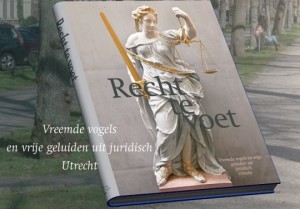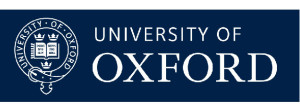Americans At Work Series ~ Bookbinders (ca.1961)
Shows the work of bookbinders and the final steps in the process of manufacturing printed books. From the “Americans at Work” series.
University Of Pennsylvania Museum Of Archaeology And Anthropology Films
![]() In its 120-year history, the University of Pennsylvania Museum has collected nearly one million objects, many obtained directly through its own field excavations or anthropological research. Three gallery floors feature materials from ancient Egypt, Mesopotamia, the Bible Lands, Mesoamerica, Asia and the ancient Mediterranean World, as well as artifacts from native peoples of the Americas, Africa and Polynesia. This collection on the Internet Archive represents a portion of the motion picture film collection housed at the Museum. Please note that cataloging and identification of subjects will progress over a period of time
In its 120-year history, the University of Pennsylvania Museum has collected nearly one million objects, many obtained directly through its own field excavations or anthropological research. Three gallery floors feature materials from ancient Egypt, Mesopotamia, the Bible Lands, Mesoamerica, Asia and the ancient Mediterranean World, as well as artifacts from native peoples of the Americas, Africa and Polynesia. This collection on the Internet Archive represents a portion of the motion picture film collection housed at the Museum. Please note that cataloging and identification of subjects will progress over a period of time
The University of Pennsylvania Museum of Archaeology and Anthropology holds copyright to these films. Please contact the Penn Museum Archives at 215-898-8304 or at photos@pennmuseum.org to request permission to reproduce this footage.
Enjoy: https://archive.org/details/UPMAA_films
Savage Minds | Notes and Queries in Anthropology
 Savage Minds is a group blog devoted to ‘doing anthropology in public’ — providing well-written relevant discussion of sociocultural anthropology that everyone will find accessible. Our authors range from graduate students to tenured professors to anthropologists working outside the academy.
Savage Minds is a group blog devoted to ‘doing anthropology in public’ — providing well-written relevant discussion of sociocultural anthropology that everyone will find accessible. Our authors range from graduate students to tenured professors to anthropologists working outside the academy.
Savage Minds was founded in 2005. In 2006 Nature ranked Savage Minds 17th out of the 50 top science blogs across all scientific disciplines. In 2010, American Anthropologist called Savage Minds “the central online site of the North American anthropological community” whose “value is found in the quality of the posts by the site’s central contributors, a cadre of bright, engaged, young anthropology professors.” In 2014 we hope to have our blog deposited into the National Anthropological Archives at the Smithsonian.
The title of our blog comes from French anthropologist Claude Lévi-Strauss’s book The Savage Mind, published in 1966. The original title of the book in French, Pensée Sauvage, was meant to be a pun, since it could mean both ‘wild thought’ or ‘wild pansies,’ and he put pansies on the cover of the book, just to make sure readers got the pun. Lévi-Strauss was unhappy with the English title of his book, which he thought ought to have been “Pansies for Thought” (a reference to a speech by Ophelia in Hamlet). We liked the phrase “savage minds” because it captured the intellectual and unruly nature of academic blogging. As a result, the pansy has become our mascot as well.
Go to: http://savageminds.org/
Dilemma 10 – Recht en opleiding
 Regelmatig zijn binnen en buiten de juridische discipline pleidooien gehouden om in de rechtenstudie meer plaats in te ruimen voor vakgebieden zoals de sociologie, de psychologie en de economie. Een breder opgeleid jurist zou beter bij de huidige complexe samenleving passen. Meer aandacht voor deze niet-juridische vakgebieden gaat echter ten koste van specifiek juridische vakken. Aldus komt de rechtenfaculteit voor het dilemma te staan:
Regelmatig zijn binnen en buiten de juridische discipline pleidooien gehouden om in de rechtenstudie meer plaats in te ruimen voor vakgebieden zoals de sociologie, de psychologie en de economie. Een breder opgeleid jurist zou beter bij de huidige complexe samenleving passen. Meer aandacht voor deze niet-juridische vakgebieden gaat echter ten koste van specifiek juridische vakken. Aldus komt de rechtenfaculteit voor het dilemma te staan:
meer aandacht in het onderwijs voor andere dan juridische disciplines en dus minder op de rechtspraktijk gericht onderwijs of weinig aandacht voor andere dan juridische disciplines en dus meer op de rechtspraktijk gericht onderwijs.
Recht te voet – Nawoord & Personalia
 Wandelen door Juridisch Utrecht
Wandelen door Juridisch Utrecht
We hebben gewandeld door Juridisch Utrecht. Het was doelgericht en tegelijkertijd ontspannen. De routes liepen van A naar B en we zijn op een prettige wijze bij de hand genomen om na te denken over een aantal belangrijke, voornamelijk juridische, thema’s. Onderweg kwamen we portretten tegen van markante Utrechtse historische figuren. Het waren wandelingen en geen dwalingen. Dat is voor mij als rechter een geruststellende gedachte.
De redactie stond voor ogen dat in dit boek een aantal schrijvers aspecten van ordening van de samenleving zouden behandelen in een voornamelijk juridische context door de eeuwen heen, tegen de achtergrond van historisch Utrecht. De schrijvers hebben daarbij vooral naar de Utrechtse geschiedenis gekeken maar de onderwerpen zijn net zo goed van toepassing op de rest van Nederland en over de grenzen heen. Het zijn soms beladen thema’s maar de benadering is lichtvoetig. Lichtvoetigheid komt de lezer goed van pas bij het afleggen van de in het boek beschreven wandelroutes. Die leiden langs plaatsen in de prachtige binnenstad van Utrecht, waar historische gebeurtenissen hebben plaatsgevonden. Dit zijn vaak gebeurtenissen met een juridische dimensie, maar daarmee niet alleen interessant voor juristen. Zo prikkelt een bezoek aan historische plaatsen, waar moord en doodslag of belangrijke politieke gebeurtenissen hebben plaatsgevonden, immers niet alleen de fantasie van juristen. Dat weten we allemaal als we als toerist een vreemde stad bezoeken.
Het is een lezenswaardig boek geworden, dat ik met plezier heb gelezen. Het boek heeft daarnaast iets van juridische reisgids, een soort Lawyer’s Planet Utrecht. Je gaat de stad met andere ogen zien. Dat de NSB in 1931 is opgericht in een zaaltje aan het Domplein 25 (pag. 119) wist ik niet. Het boek nodigt uit om er eens een kijkje te nemen. Datzelfde geldt voor De Lichte Gaard no. 8, waar in 1935, op de zolderverdieping boven het eerste Chinese restaurant van Utrecht, in een opwelling van woede de kok een kelner keelde (pag. 81). Voor juristen interessant is de geschiedenis van de Gertrudiskapel en de historische context waarin deze zich afspeelt (pag. 166). In deze kapel en het daarmee verbonden kleinschalige, gastvrije zalencentrum “De Driehoek“ vinden tegenwoordig veelvuldig symposia en andere bijeenkomsten van rechters plaats, niet alleen van de rechtbank Midden-Nederland maar ook landelijk. En wie wist dat aan de “achterkant” van het Centraal Station, tussen het Station en de Jaarbeurs, bij de Croeselaan een gedenksteen te zien is voor brigadier Arie Kranenburg, die daar op 22 september 1977 werd doodgeschoten door Knut Volkerts, lid van de Rote Armee Fraktion (pag. 34). Zijn proces, in de oude rechtbank aan de Hamburgerstraat, waarvoor de halve binnenstad werd afgezet, zullen veel mensen zich nog herinneren. Het zijn maar een paar voorbeelden. Read more
University Of Oxford ~ Podcasts ~ Faculty Of Philosophy
 The John Locke Lectures
The John Locke Lectures
The John Locke Lectures are among the world’s most distinguished lecture series in philosophy. You can listen to Professor John Cooper’s 2011 series entitled ‘Ancient Greek Philosophies as a Way of Life‘, Professor David Chalmers’s 2010 series entitled ‘Constructing the World’, Professor Thomas Scanlon’s 2009 series entitled ‘Being Realistic about Reasons‘, Professor Hartry Field’s 2008 lecture series entitled ‘Logic, Normativity, and Rational Revisability’ and Professor Robert Stalnaker’s 2007 lectures series entitled ‘Our knowledge of the internal world’ here.
Interviews with Philosophers
Podcast interviews with members of the Faculty of Philosophy giving their own insight into Philosophy at Oxford.
Philosophy for Beginners
This series of five introductory lectures, aimed at students new to philosophy, presented by Marianne Talbot, Department for Continuing Education, University of Oxford, will test you on some famous thought experiments and introduce you to some central philosophical issues and to the thoughts of some key philosophers. The first lecture, A Romp Through the History of Philosophy, was global number one on iTunesU.
Critical Reasoning for Beginners
In this six-week course delivered by Marianne Talbot, another global number one and now downloaded over 2 million times, you will learn all about arguments, how to identify and evaluate them, and how not to mistake bad arguments for good.
And more: http://www.philosophy.ox.ac.uk/podcasts


